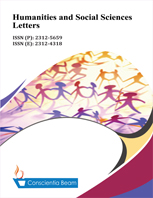Human capital spillovers and plant productivity in ASEAN: Evidence from the plant panel data
DOI:
https://doi.org/10.18488/73.v12i2.3701Abstract
This paper examines whether local human capital spillovers can affect plant productivity in three Association of Southeast Asian Nations (ASEAN) countries using panel data from the World Bank enterprise survey between 2009 and 2015. According to the literature, spillovers in the form of human capital are critical for economic growth. The spillovers exist if plants can produce more in the region with the abundant number of skilled workers given their inputs. This study uses the augmented Cobb-Douglas production function to evaluate the influence of the non-production worker proportion outside the plant which serves as a proxy for skilled workers. The findings indicate that plant production is impacted by spillovers of human capital. This study finds that a 1 percentage point increase in the proportion of nonproduction workers within a region will enhance the productivity of plants in all regions by roughly 7.1–8.9 percent. Moreover, productivity rises are found to be higher for low-tech plants. According to the economic significance of these spillover effects, the value-added per plant will rise by US$ 330,000 or US$ 866.75 million for the manufacturing sector as a whole. According to the findings, policymakers should encourage plants to provide workers with additional training and raise the level of human capital through education.

